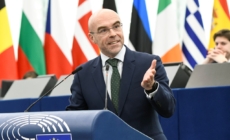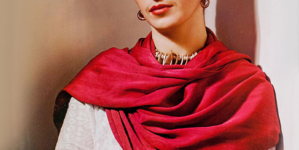-
Prince Harry Revealing What Makes Meghan Different Draws Attention - 12 mins ago
-
“Viktor Orbán is an Example for US” - 19 mins ago
-
Photos of Frida Kahlo in Budapest - 22 mins ago
-
Philippine preacher denies accusations of sexual abuse - 34 mins ago
-
In some battleground states, low-wage workers keep losing ground - 38 mins ago
-
Jelly Roll drops 100 pounds: How the country music star transformed his body - 39 mins ago
-
Aaron Rodgers on Jets struggles and 2-5 record: Playing with too much anger | First Things First - 43 mins ago
-
Trump Did Nothing on Gun Violence. Don’t Let Him Do It Again | Opinion - 51 mins ago
-
Leipzig’s Péter Gulácsi Praised for Excellent Saves against Liverpool - 53 mins ago
-
Used car sales at record high - 55 mins ago
Queen Elizabeth II statue mocked for looking like Mrs. Doubtfire
Any immortalization of the British monarch is courting controversy in Northern Ireland. This land is still divided between protestants, most of whom see themselves as British and thus tend to like the royals, and Roman Catholics, who largely see themselves as Irish and therefore reject the monarchy.
Nevertheless her 70-year reign saw a remarkable turnaround for many in the province.
In 1977, her visit marking her Silver Jubilee was welcomed with graffiti in Belfast reading, “Victory to the IRA, Stuff the Jubilee.” In 2012, however, the queen shook hands with IRA commander Martin McGuinness — a sight many covering the conflict never thought they’d see.
Thankfully perhaps, artist Anto Brennan has this week whipped up a different kind of ire.
His other works include political caricature chess sets, including one based around the main players of the Good Friday Agreement that brought peace to Northern Ireland in 1998.
“I’m not sure” if this comic style was “what the artist was aiming for” with last week’s statue, said Morris, the art historian. “I know he does satirical pieces of politicians in Northern Ireland. But I think, given that this was supposed to be the centerpiece of the park, it should have been rather more accurate than it is.”
NBC News has contacted Brennan, the artist, for comment by phone and social media.
Officials will hope there is a better reception for an official memorial to the queen that is planned for London’s St James’s Park and set to be unveiled in 2026, the government announced last week.
Prime Minister Keir Starmer said the location in the “heart of the capital” would “provide a space for pause and reflection” to remember the widely popular royal.
Back in Northern Ireland, the local council has defended its piece.
In an emailed statement, the borough council said it was “delighted with the generally positive response” to the statue, which had been “warmly received by most who have seen it in person.” The council said it “acknowledges that art can sometimes spark diverse opinions,” although it did not respond to a question about how much this public artwork had cost the taxpayer.
This being 2024, some of these “opinions” have verged on the abusive, and the council has now switched off Facebook comments under its post about the statue.
Instead — apparently channeling the maxim that any publicity is good publicity — it seems to be trying to convert the attention into a tourism opportunity.
“While social media may amplify certain negative viewpoints,” it said, “the council encourages everyone to visit Antrim Castle Gardens and experience the sculpture firsthand.”
Source link































